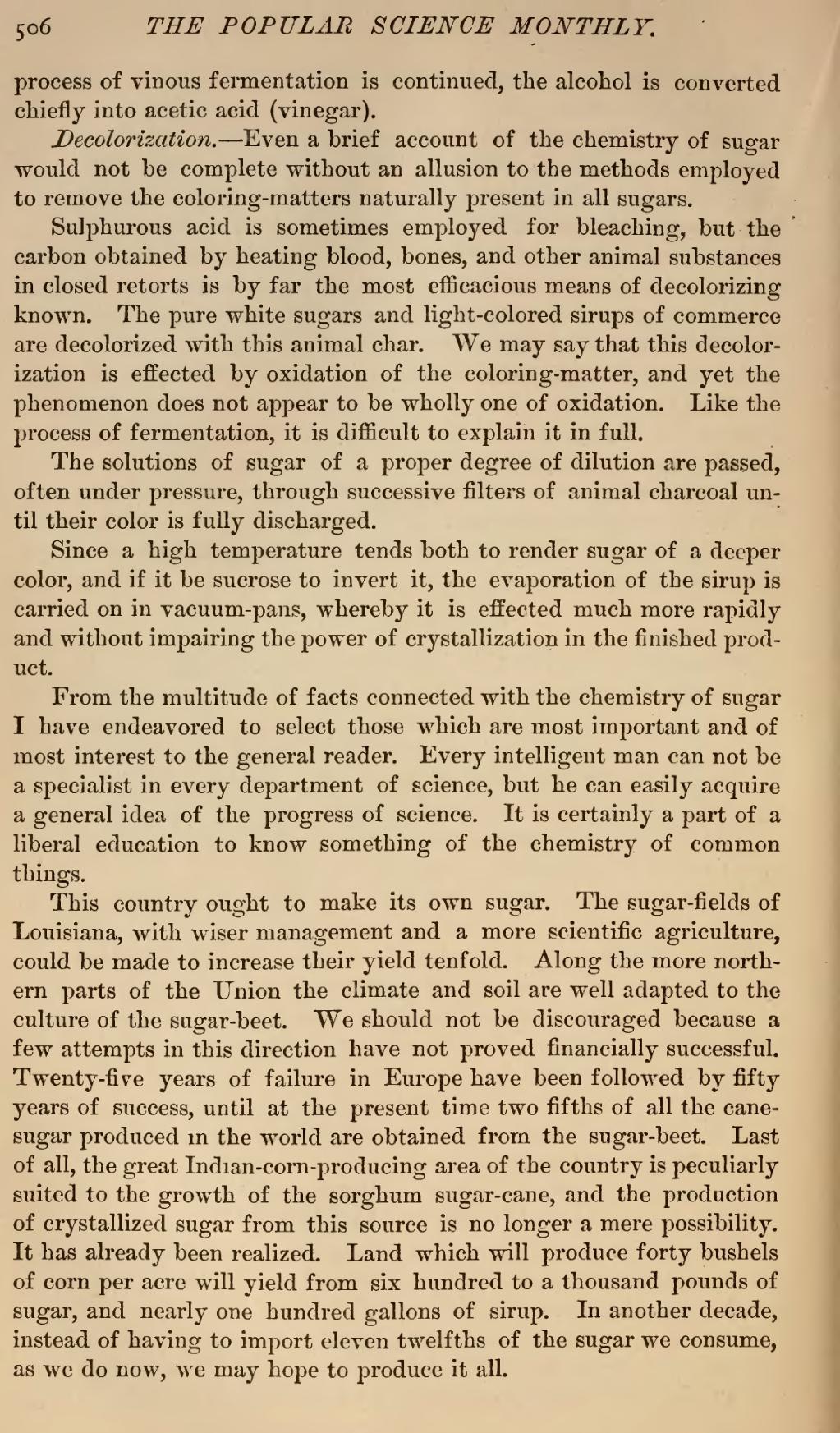process of vinous fermentation is continued, the alcohol is converted chiefly into acetic acid (vinegar).
Decolorization.—Even a brief account of the chemistry of sugar would not be complete without an allusion to the methods employed to remove the coloring-matters naturally present in all sugars.
Sulphurous acid is sometimes employed for bleaching, but the carbon obtained by heating blood, bones, and other animal substances in closed retorts is by far the most efficacious means of decolorizing known. The pure white sugars and light-colored sirups of commerce are decolorized with this animal char. We may say that this decolorization is effected by oxidation of the coloring-matter, and yet the phenomenon does not appear to be wholly one of oxidation. Like the process of fermentation, it is difficult to explain it in full.
The solutions of sugar of a proper degree of dilution are passed, often under pressure, through successive filters of animal charcoal until their color is fully discharged.
Since a high temperature tends both to render sugar of a deeper color, and if it be sucrose to invert it, the evaporation of the sirup is carried on in vacuum-pans, whereby it is effected much more rapidly and without impairing the power of crystallization in the finished product.
From the multitude of facts connected with the chemistry of sugar I have endeavored to select those which are most important and of most interest to the general reader. Every intelligent man can not be a specialist in every department of science, but he can easily acquire a general idea of the progress of science. It is certainly a part of a liberal education to know something of the chemistry of common things.
This country ought to make its own sugar. The sugar-fields of Louisiana, with wiser management and a more scientific agriculture, could be made to increase their yield tenfold. Along the more northern parts of the Union the climate and soil are well adapted to the culture of the sugar-beet. We should not be discouraged because a few attempts in this direction have not proved financially successful. Twenty-five years of failure in Europe have been followed by fifty years of success, until at the present time two fifths of all the cane sugar produced m the world are obtained from the sugar-beet. Last of all, the great Indian-corn-producing area of the country is peculiarly suited to the growth of the sorghum sugar-cane, and the production of crystallized sugar from this source is no longer a mere possibility. It has already been realized. Land which will produce forty bushels of corn per acre will yield from six hundred to a thousand pounds of sugar, and nearly one hundred gallons of sirup. In another decade, instead of having to import eleven twelfths of the sugar we consume, as we do now, we may hope to produce it all.
